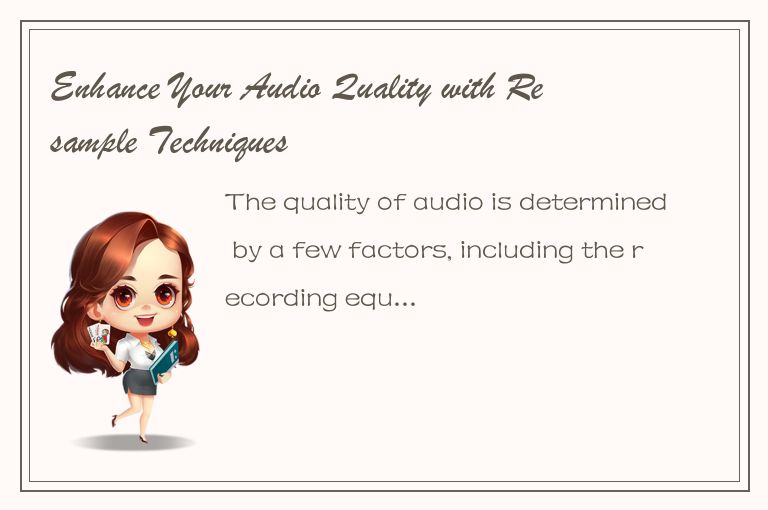The quality of audio is determined by a few factors, including the recording equipment used, the recording environment, and the mixing and mastering process. However, one factor that is often overlooked is the sampling frequency used during recording and playback. In this article, we will explore the concept of resampling and how it can be used to enhance the audio quality of your recordings.
What is Resampling?

Resampling is the process of changing the sampling frequency of a digital audio signal. The sampling frequency, also known as the sample rate, determines the number of samples per second the audio signal is encoded with. For example, a sampling frequency of 44.1 kHz means that the audio signal is sampled 44,100 times per second.
Resampling can be used to increase or decrease the sampling frequency of an audio signal. When the sampling frequency is increased, the digital audio signal is re-calculated using more samples per second. When the sampling frequency is decreased, the digital audio signal is re-calculated using fewer samples per second.
Why Resample?
There are a few reasons why you might want to resample an audio signal. One reason is to change the compatibility of the audio file. For example, if you have an audio file at 48 kHz and you need it to be at 44.1 kHz to burn it onto a CD, you can use resampling to achieve this.
Another reason to resample is to change the perceived pitch of an audio signal. When you increase the sampling frequency, the pitch of the audio signal is raised, and when you decrease the sampling frequency, the pitch of the audio signal is lowered.
Finally, resampling can be used to enhance the overall audio quality of a recording. When you resample an audio signal, you are effectively changing the frequency response of the audio signal. This means that you can remove unwanted frequencies and enhance desired frequencies.
Resampling and Quality
When resampling an audio signal, it is important to understand how it affects the quality of the audio signal. Resampling can introduce artifacts, such as aliasing and quantization noise, which can degrade the quality of the audio signal.
Aliasing occurs when a signal at a higher frequency is incorrectly represented at a lower frequency, resulting in distortion. Quantization noise occurs when the sampling resolution is insufficient to accurately represent the analog signal, resulting in noise.
To minimize the effects of resampling on the quality of the audio signal, it is important to choose the appropriate resampling method and to use high-quality resampling algorithms. Many digital audio workstations are equipped with high-quality resampling options, such as anti-aliasing filters and dithering.
Conclusion
Resampling is a powerful tool for enhancing the quality of your recordings. It can be used to change the compatibility and perceived pitch of an audio signal, as well as to enhance the overall audio quality by removing unwanted frequencies and enhancing desired frequencies.
However, it is important to understand how resampling affects the quality of the audio signal and to use high-quality resampling algorithms to minimize the introduction of artifacts. With careful consideration and proper use, resampling can be a valuable tool in your audio production toolkit.




 QQ客服专员
QQ客服专员 电话客服专员
电话客服专员